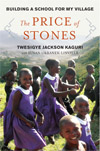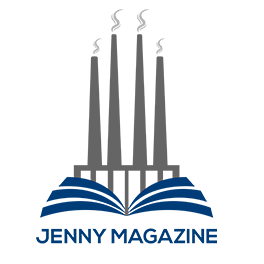 Susan Linville is the co-author of The Price of Stones, which tells the story of the building of a school in co-author Twesigye Jackson Kaguri’s home village in Uganda. The Nyaka AIDS Orphan School was a step forward in a campaign to end superstitions surrounding HIV and AIDS in Uganda.
Susan Linville is the co-author of The Price of Stones, which tells the story of the building of a school in co-author Twesigye Jackson Kaguri’s home village in Uganda. The Nyaka AIDS Orphan School was a step forward in a campaign to end superstitions surrounding HIV and AIDS in Uganda.
We had the opportunity to speak to Susan Linville about her awareness of the Nyaka project, the importance of literacy in Nyakagyezi, and the pure power and potential of a community that cooperates to achieve a dream.
You co-wrote The Price of Stones, a memoir about the founding of NYAKA AIDS orphans school in Uganda, with Twesigye Jackson Kaguri. President Jimmy Carter wrote that “The Price of Stones is an inspiring account of turning tragedy into hope for others. Can you tell us about how you became involved with this project?
In 2003, when I lived in Bloomington, Indiana, the local newspaper ran an article about the Nyaka Project. I was inspired to donate backpacks, and when I met Jackson Kaguri he invited me to a fundraising dinner. By the next year, I was on the board of Indiana Friends of Nyaka and involved in planning the second banquet and other fundraising events. At one point, Jackson mentioned that he would like to write a book about his experiences. I had published several short stories and had experience writing newspaper articles at this point. I felt it was important to share Jackson’s story and volunteered to ghostwrite the book for him. After several interviews, I visited Uganda in October of 2005 to see the country and visit the school. I began writing the book upon my return. After several revisions for my agent and editor, the book was published in June 2010.
The NYAKA AIDS Orphan Project is working to provide AIDS education and outreach, school meal programs, and clean water to those in need in Uganda. I’m moved again by the providing of these needs for the body alongside the providing of education and literacy, the needs for the mind and the soul. Is writing medicine? In what ways can reading and writing be medicine for a child in Uganda?
Education and literacy are the most potent medicines we can give children in Uganda. These are particularly important to AIDS orphans who have lost at least one parent, and in most cases, both parents to the disease. If they’re lucky, they have a grandparent or uncle to care for them. Often, they are an extra burden for an already stressed farming family living on less than a dollar a day. They’re shunned by their community for fear that they will spread the disease. As orphans, they would receive no education and inherit no land. They would have to turn to low paying jobs, begging or prostitution for survival. Education is their way out of poverty and the AIDS stigma. Literacy opens a new world up to them.
Literacy also gives them a voice. It allows them to articulate the pain of the open wound that was left behind when they lost their parents. Students in fourth and fifth grade write essays about their experiences and heartache, and poems about their suffering and enduring hope. In a small way, writing allows them to begin healing the wound they bear.
I was very moved by Kaguri’s idea that “It takes children to raise a village.” In what ways can this be applied to the educational system here in the States? How can Youngstown, for example, work to both serve and learn from our children and our young people?
Here in the States, the link between a community’s success and its children’s education seems to have been forgotten. School budgets are being cut, drop-out rates are on the rise and people are more concerned about cutting taxes than how the next generation is being educated. As our focus on education slips, our children grow up to find themselves in poverty, unable to participate in the job market, and left behind in global competition. In the end, we all suffer.
When Jackson visits Nyaka School, he insists the students look him in the eye. He wants them to develop the confidence and self-worth they will need to succeed. He requires that they speak up when they have something to say and stand up for their opinions. As a villager who escaped poverty through education, he acts as a powerful role model. He expects them to succeed and they do. The school has graduated 60 students so far, and only one has not passed on to secondary school. The others have ranked in the 85th percentile and above in national tests. Most importantly, a majority of the students plan to return to their village as teachers, doctors, nurses, to give back to their community as Jackson has done.
Nyakagyezi and Youngstown may be half a world apart, but they are both recovering from devastation. To continue that recovery requires a new generation of young people to bring their skills, talents and abilities to bear. Here in the States, we leave education to parents and teachers, but communities are full of leaders who could involve themselves with students. Young people often need only a role model and the expectation of excellence succeed. If Youngstown wants a bright future, people must interact with students at a personal level and inspire them to act in their community.
My experience has been that college undergraduates tend to see math and science as separate from writing, and they allow this segregation in their minds because of that idea out there that a person can only be good at one or the other. Can you talk about your work as a biologist? You’ve contributed to the wonderful series on NPR, “A Moment of Silence,” and of course you write exclusively about biology, about things like animal behavior and water on other planets. I’m most interested in how your studies of writing and biology mesh or clash. What might you say to a biology major who is quick to dismiss his or her freshman writing course?
My two loves, science and writing, evolved simultaneously. Separate but equal, you might say. My paternal grandmother was an oral storyteller. Being the eldest daughter of ten children born to Slovak immigrants in the mining community of Leisenring #1, she certainly had plenty of life experiences to relate. She even had a true ghost story in her repertoire. I believe she was the spark for my love of telling a good tale. My interest in science was born with the space program. Many of my childhood memories are of watching the Gemini launches and cutting out newspaper articles about the Apollo program. In grade school I had a dinosaur diorama set up in my bedroom and my first poem appeared in the local newspaper. In junior high I was excelling in math and science and handwriting Dark Shadows stories for my girlfriends to read. In college, while filling my mind with facts and figures, I couldn’t help but scribble a few poems on the page or write a short story. While working on my PhD, I won a major SF writing award for new authors.
I am the first to admit that I am not the most eloquent writer. I think that comes from the fact that I am a scientist at heart. My interests are in story plot, idea and character development rather than a turn of phrase, symbolic pattern or metaphor. I tend to have problems with thinking too logically when it comes to creating my own story plots. Of course, logical thinking is a strength for a scientist. I guess it should be no surprise that Science Fiction became my favorite genre. It was the perfect vehicle to combine my interest in science and storytelling.
In the last few years, I’ve added science writing to my repertoire. I find that storytelling techniques can be used to make science more accessible to the general public. It’s not as fulfilling as creating alien worlds and following a character through the trials of life, but science writing can be a type of storytelling in its own right.
Science majors should understand that they will most likely need good communication skills to succeed in today’s world. Writing a research article requires many of the same skills as fiction writing. Sentence clarity and word choice are as important as statistical analyses and data presentation. At a time when job competition is high and published research a prerequisite, having an advantage over other applicants can hinge on writing ability.
Something we found very inspiring about your work on the Price of Stones is that idea that someone with a modest idea is capable of extraordinary things, that idea that if you invest not only your physical self but your heart and soul into a project that it can work wonders for the self and for others. What have you did you learn from your experience working with Twesigye Jackson Kaguri that can be applied to the struggle here in Youngstown to improve not only the city itself but the quality of life for those living in and around it?
There are two things that strike me about the success of the Nyaka Project. The first is hope. I have seen children with literally nothing but the clothes on their back happy and smiling because they have hope in the future. In Nyakagyezi, the village where Nyaka Aids Orphans School stands, there is one light shining in the night, a solar electric bulb hanging from the roof of the school. It is a simple but elegant symbol of how one small idea can change an entire community. All it took was someone with a little courage to lead, a few dollars and a lot of hope.
Cooperation is the second important factor in Nyaka’s success. Jackson is the first to tell people that he did not build the school alone. It took two ministers in Indiana, a family in Oklahoma, a church in New Mexico, a group of grade school students in California, and a woman living on social security to get things started. It took a village chief, a Ugandan minister, church leaders, brick makers, and grandmothers willing to give their last chicken to build the school room by room. Without the help of those who believed their small part was leading to a greater whole, there would be no Nyaka school.
In Uganda, there’s a school growing on a hillside once used to graze goats and cattle. It was an investment in the future for both a village and a country. Its success led to the construction of a second school, a ten acre farm, a gravity-fed water system offering clean water to thousands in the community, and the first library in western Uganda. If a school can rise from a grassy hillside in an area with no electricity, no running water, no indoor plumbing, malaria carrying mosquitoes, and people stricken with poverty and AIDS, just think of what can grow from the remains of Youngstown’s steel mills. People may be waiting for a leader, enough money, the right economic climate or other external factors, but what they need most are hope and cooperation. Any barefoot AIDS orphan in Nyakagyezi will tell you that.
 The Price of Stones is on sale now in bookstores everywhere.
The Price of Stones is on sale now in bookstores everywhere.
